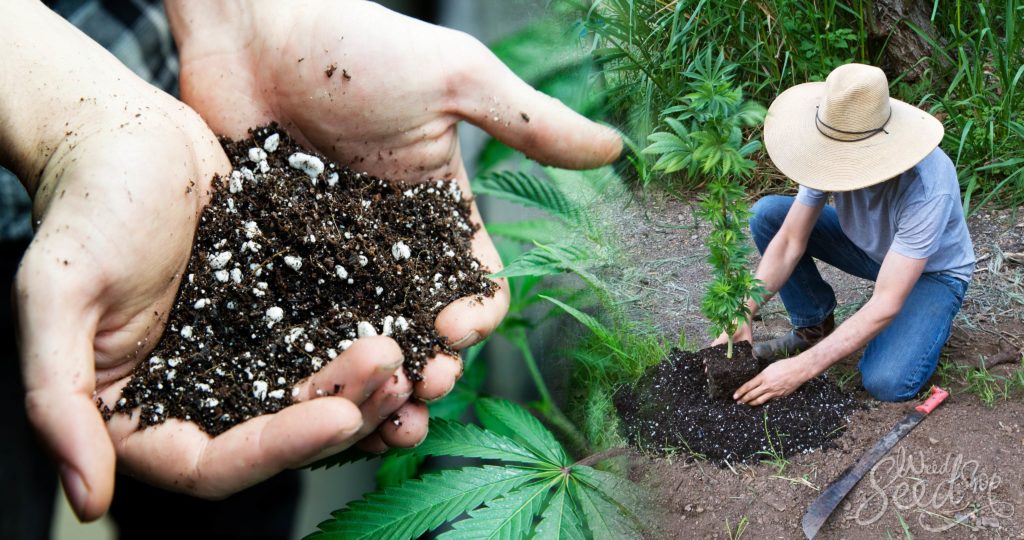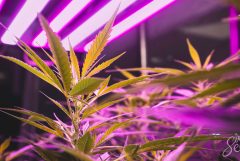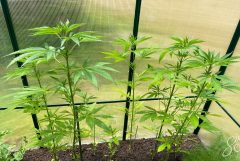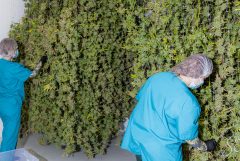The soil in which you grow your weed is the place where it all begins, and if you can get that right, the rest will be much easier. Cannabis has some special requirements when it comes to soil that you should know before you get planting. Keep reading this article to find out how to choose the best soil.
One of the most important steps in the cultivation of a successful cannabis garden is right at the source – your soil. Ensuring that you have selected the right soil for growing cannabis can make the vegetation and flowering of your plant much easier.
Without doing so, you make extra work for yourself during the growing process, by having to add nutrients. This is less ideal for first time growers, too, who don’t have too much horticultural experience.
This article covers the soil basics, so that you start with the best possible growing environment. It will also help you to decide (if you haven’t done so already) if you want to grow indoors, outdoors, in pot plants or directly into the ground.
In any of these situations, good soil is essential to growing your own cannabis plants. So, whether you are an experienced grower, or reading because you need information for growing the first time, keep reading!
What makes good soil for cannabis?
Before you go purchasing soil or even choosing whether you will grow indoors or outdoors, you should know what kind of soil cannabis likes. It is important that the soil has the correct balance of nutrients for cannabis and provides the correct environment for water and airflow.
When you are looking at a bag of soil, the three things you should pay attention to are:
- which nutrients are available,
- in what quantities they are available, and
- the pH balance
You can consider things such as whether the soil is made for edible foods, because remember that your weed is going to end up inside your body. If it’s organic, there’s no need to panic.
The most important factor aside from being chemical free is the pH level. This is generally the biggest variable between soils that you will find in stores. Weed likes a pH balance of 5.5-6.8
Your soil should be fertilized already – especially if you are a first-time grower. If it’s not, you’ll be required to fertilize your plants, which adds extra work. If a product is lightweight, and containing few nutrients, it is of no use to you. Soil lacking in nutrients is not a conducive environment to growing cannabis plants.
For the easiest cultivation, your soil should have a good balance between weed’s favourite nutrients: nitrogen, potassium and phosphate. Some potting mixes will contain high levels of nitrogen and lower levels of phosphate, which is less ideal for those who want growing to be easy. Look for a good balance between the three nutrients.
In Europe, the following nutrient content is standard:
- 200-450 mg/l N
- 200-500 mg/l P
- 300-550 mg/l K
- 80- 120 mg/l Mg
Choosing soil and pots for drainage
If you’re growing your pot in pots, whether indoors or outdoors, you need to consider drainage and airflow. Remember that clay pots actually absorb some of the water that you use during watering, so plastic buckets are better. Remember to choose the kind that have drainage holes at the bottom.
Your soil needs to allow for maximum flow of water and air. It also matters how much soil you use and how densely you pack it into the pot, as this will affect water drainage.
When you water, it needs to reach all the way down to the roots. Overly packed soil or soil unfavourable to the flow of water is going to inhibit the distribution of nutrients into your plants. Soil optimum for growing cannabis should provide ample drainage and allow for rapid root growth. It should have a high air-water ratio.
Soil for cannabis plants in pots
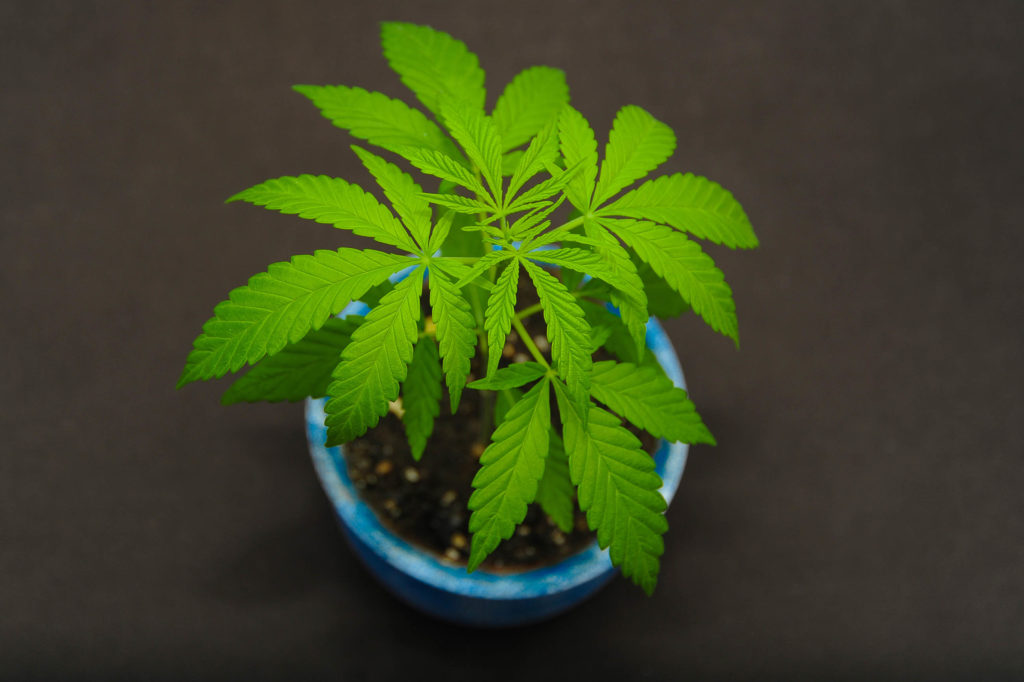
Growing in pots means that you get complete control over the medium in which your cannabis grows. Without a surrounding environment, there is really nothing coming from outside to feed or destroy your plant. In some ways this is great, and in some ways this requires more attention during vegetation and flowering to ensure that the nutrient levels are maintained.
When cannabis is growing in a pot or bucket, you are its entire source of food and nutrients. That means you have to pay close attention to the nutrient levels in your soil, in case that they require more of a certain nutrient.
Whether growing indoors or outdoors, you can use the same pots and the same soil. You will still have to police it heavily for nutrient levels and pH levels, but you minimize the risk of invaders that live in the surrounding environment.
Being sensitive to your plants’ needs throughout the growing process is essentially the only way to know when it requires nutrients. However, this also allows you to maintain the perfect growing environment without external factors interfering.
Soil for cannabis plants in the ground
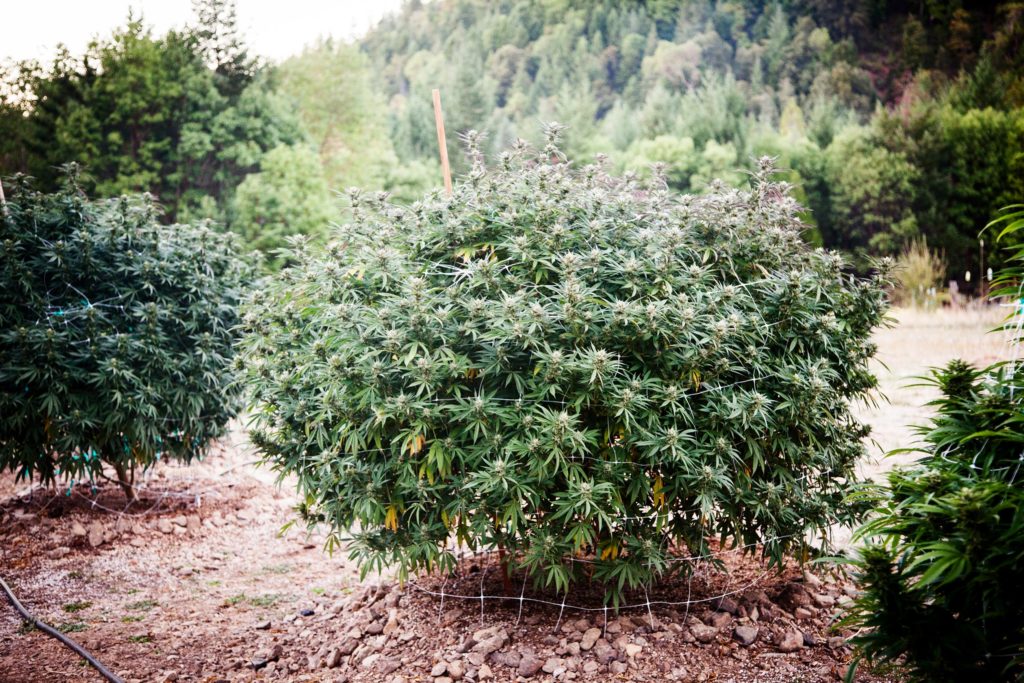
If you are choosing the natural soil option for growing weed, it will be important to get an understanding of what the soil is like in that area and the areas surrounding it. The point is that your plant will be drawing nutrients and information from the entire area, and if it is not ideal for cannabis, it may not grow well.
Growing weed in clay-like soil is not ideal and not usually recommended. However, in sandy and fluffy soils, weed can flourish quite well. These mediums allow for the movement of water and root growth, as well as the circulation of air.
Growing in the ground also means that your plants do not suffer the limitations of root growth that they might experience in pots. Because of that, your plants can grow to be bigger, more luscious and potentially yield more.
For all of this to be possible, you have to first test your outdoor soil. The pH level of the soil varies in each location, and if the soil is too acidic or too alkaline, your crop will suffer.
What if your soil is not the right pH level to support cannabis growth? You can spend some time creating the right environment in your soil with fertilizers, or you can resort to growing in pots. This will all depend on what you are trying to achieve and how much time you have.
Once the perfect environment is created, the network of microbes and insects living in soil become feeders of nutrients to your plant, too, and this means less work for you and a better yield.
Making your own soil
It is always an option to make your own soil, in which case we recommended to make Recycled Organic Living Soil (ROLS). This option is full creative control, giving you the ability to load it with nutrients so that you won’t need to add nutrients later on. On top of that, homemade soil is usually even cheaper than store-bought soil!
What do you guys think? Do you prefer to grow indoors or outdoors, in which soil, and if you grow outdoors: do you grow in flowerpots or in the ground? We’d love to hear from you!





